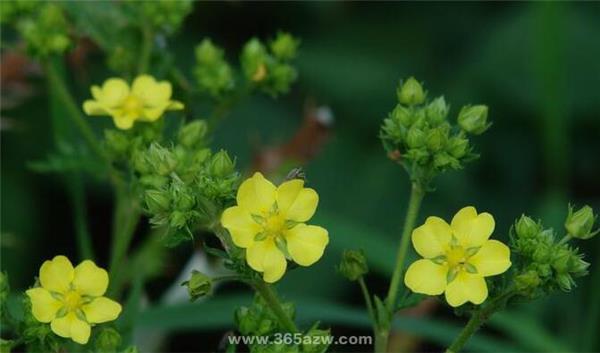What are the effects and effects of turning white grass?
Potentilla discolor grass has a high efficacy of traditional Chinese medicine, this article has a total effect and role of Potentilla discolor grass, we can do a reference.

Description of White Grass:
Discolor grass is a rose family Potentilla plants, leaves back is densely white fluff, hence the name, also known as Pulsatilla, toad grass, Tianqing white. The tender stems, leaves and roots of white grass can be used for daily consumption. After blanching with hot water, soak them in cold water for a long time to remove the bitter taste. They can be mixed cold, fried, made into soup, stuffed, etc. All herbs can be used as medicine to clear away heat and toxic materials, cool blood and stop bleeding. It can be used to treat dysentery, diarrhea, leucorrhea, malaria, hematemesis, hematochezia, traumatic hemorrhage, dysentery abdominal pain, chronic dysentery, hemorrhoids bleeding, carbuncle swelling and sore poison.
The effect of white grass:
Discolor grass has the effect of clearing heat, detoxifying, stopping bleeding and detumescence. Indications dysentery, malaria, pulmonary carbuncle, hemoptysis, vomiting blood, metrorrhagia, carbuncle, acne, tuberculosis and other diseases.
According to modern medical clinical verification, the combination of Chinese herbal medicine and Qiongzhen Ganoderma lucidum has the effect of treating diabetes, mainly lowering blood sugar, treating insomnia, preventing complications and the like, and can also be added with Cortex Lycii.
Potentilla discolor has antibacterial, antidiarrheal, immune function enhancement and blood sugar regulation effects. Quercetin is the main chemical substance involved in blood sugar regulation.
Moreover, the herb mainly contains tannins and flavonoids, and its decoction has an inhibitory effect on Shiga dysentery bacillus, Shigella flexneri, Staphylococcus aureus and Salmonella typhi.

The role of white grass:
1. Fumaric acid, gallic acid, protocatechuic acid, quercetin, naringenin, kaempferol and isophthalic acid extracted from Potentilla discolor have antibacterial effects on Shigella flexneri and Shigella dysentery, especially gallic acid and quercetin have the strongest activity, and the minimum inhibitory concentrations are 59ppm/ml and 37ppm/ml respectively.
2. Clearing heat and detoxifying: sweet and bitter cold, sweet can slow poison, cool can remove heat, bitter can eliminate dampness, has the function of clearing heat and removing dampness, detoxifying and detumescence, and can be used to treat carbuncle swelling, damp heat dysentery, scabies, acne and other diseases.
3. Cooling blood to stop bleeding: cool nature can clear blood heat, so it can cool blood to stop bleeding; in addition, it can remove blood stasis and generate new blood, disperse depression to stop bleeding, so the hemostatic power is quite good. It can be used to treat various bleeding diseases such as blood-heat bleeding, especially for vomiting blood and collapse.
How to choose white grass

Dry whole grass with roots, roots spindle or conical, sometimes divergent, ca. 5 - 8 cm long, dark brownish red surface, twisted and wrinkled, cork without peeling marks. No distinct stems. Root root is born, odd pinnate compound leaf, small leaf blade two pair is born, long elliptic, have short stalk, top 1 is bigger, become smaller gradually downward, shrink, fold inward from midvein more, upper surface is dark green, lower surface is ashen white; dense pilose, edge has coarse sawtooth. The root head and petiole are white hairy. It's a little brittle and fragile. It smells slightly smelly and tastes astringent. It is better to have no flower stem, white and white, and no impurities.

The above is the effect of white grass and the role of the relevant introduction, I hope to help you.
- Prev

The reason why the gentleman orchid caught the arrow what should the gentleman orchid do?
The reason why the gentleman orchid caught the arrow what should the gentleman orchid do?
- Next

What are the reasons for the yellowing of green pineapple leaves? what should we pay attention to in green pineapple culture?
What are the reasons for the yellowing of green pineapple leaves? what should we pay attention to in green pineapple culture?
Related
- Wuhan Hospital Iron Tree Blooming Result Was Instantly Frightened by the Gardener Master
- Which variety of camellia is the most fragrant and best? Which one do you like best?
- What is the small blue coat, the breeding methods and matters needing attention of the succulent plant
- Dormancy time and maintenance management of succulent plants during dormancy
- Minas succulent how to raise, Minas succulent plant pictures
- What are the varieties of winter succulent plants
- How to raise succulent plants in twelve rolls? let's take a look at some experience of breeding twelve rolls.
- Attention should be paid to water control for succulent plants during dormant period (winter and summer)
- Watering experience of twelve rolls of succulent plants
- Techniques for fertilizing succulent plants. An article will let you know how to fertilize succulent plants.

